Gill has been teaching Botanical Art at The Cavern with Elsa Pooley for more than 20 years! She is an expert in her field and we are so fortunate to have a few of her paintings on display at The Cavern.
Gill & Elsa will be with us again from Monday 25th November to Sunday 1st December 2024 for the next Botanical Art Course. These ladies are inspiring in their knowledge, accomplished teachers and brilliant company. It’s the infusion of greatness that really makes this course memorable!
Gill shares a little more with us;
1. Where did you grow up?
I had a wonderful early childhood. I was born in Nairobi, Kenya and lived there for five years until my parents moved back to Kampala in Uganda. I was always outside climbing trees and catching insects to study. My parents loved sailing, so weekends were spent on Lake Victoria surrounded by the bush. I too loved sailing and fishing. When I was twelve, the family moved back to the UK where my two older sisters were already living. I was desperately unhappy with school there, yearning to return to Africa. I completed high school and attended the local art college for my foundation course. I was accepted to Hornsey College of Art in London (later Middlesex Polytechnic) for a course in Scientific Illustration. I was so happy to be painting fish and birds, I felt that the course had been designed just for me.
2. What sparked your interest/passion for plants/painting?
I had always enjoyed the outdoors, but rather fell into art and plants by accident. I don’t remember drawing much as a child, but art was always my favourite subject at school, so art college seemed a good idea. I had a couple of brilliant lectures who opened my eyes and awakened a passion in me. After my Scientific Illustration course, I was accepted into the Royal College of Art to do a two-year Master’s by Project degree. My chosen title was “British Poisonous Plants“. That had me scouring the English hedgerows looking to specific plants and heading off down country lanes searching for marshy areas to find the Flag Iris. A lot of time was also spent in the Chelsea Physic and Kew Gardens, but nothing can beat seeing the plants in their natural environment.
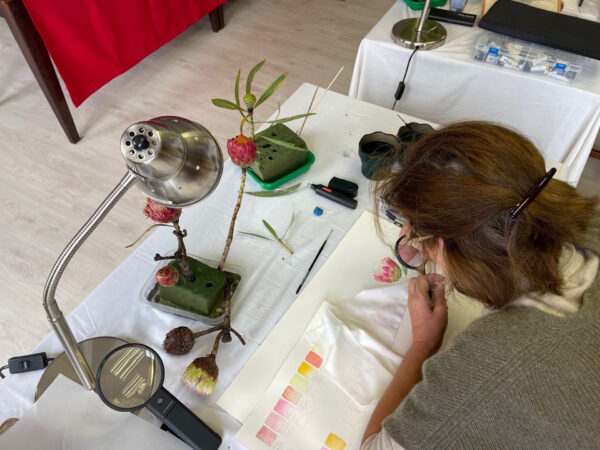
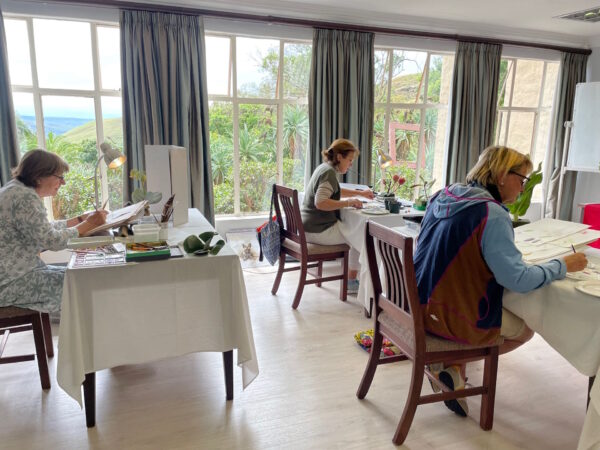
3. Why is Botanical Art so important? What is its relevance?
Centuries ago, before the camera had been invented, artists were employed to record plants new to science as they were discovered. These days, new species are still described with an accompanying illustration. While working at the National Herbarium I learnt the important role that botanical artists can still play. Around the world artists are busy studying the flora of threatened eco systems, recording plants while we still have them. Many artists are conservationists as we bond and fall in love with our plants.
4. What are you currently working on?
I retired from the National Herbarium five years ago. I was offered an Artist in Residency at Tswalu Kalahari Reserve to illustrate the flora over a horticultural year. I made about 8 trips over 14 months illustrating the plants I found, then Covid hit. In lockdown, I was able to complete the flora illustrations I had begun as well as try my hand doing a few wildlife paintings from my photographs. My exhibition at the Everard Read Gallery was postponed a couple of times due to the restrictions but happened in February 2021. I am privileged to be busy with a second project at Tswalu, “Butterflies and their Host Plants“.
In 2021 was invited to do the illustrations for the revision of the family Barleria. There are a total of 60 species, including 6-8 new discoveries. I have had several wonderful field trips and am working closely with some great botanists. Flowering time has come back round, so I must get back to the artworks.
I still illustrate for SANBI’s “Flowering Plants of Africa”, accept various commissions, and participate in local exhibitions. I am working on two sets of paintings which I hope to one day submit to the Royal Horticultural Society of London’s exhibition. So, I am keeping fairly busy!!
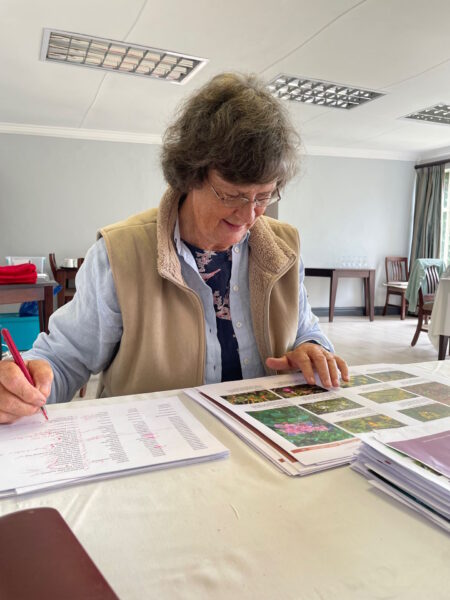
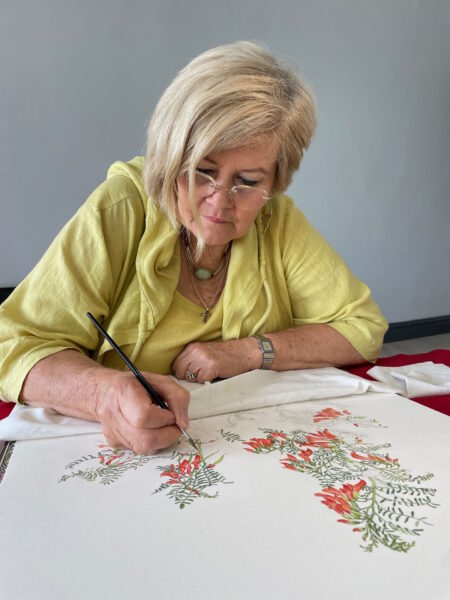
5. List a few of your greatest achievements in the past few years.
Straight after retirement I was involved in curating the South African leg of the Botanical Art Worldwide exhibition where 26 countries around the world held simultaneous exhibitions.
That was incredibly special, being part of something so big, connecting with other artists around the world and especially watching the crowds of people who filed through the Everard Read Gallery and their reaction.
I was recently working on illustrations for a book on Baobabs, which took me to Madagascar twice with the author. An unforgettable experience.
I am privileged to have participated in a number of Florilegium around the world, so am excited to be part of a South African project at Grootbos Private Nature Reserve in the Western Cape. The book and special designed gallery were opening in September 2022.
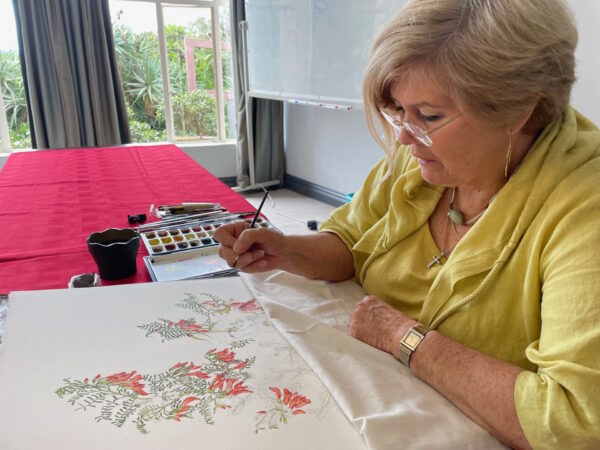
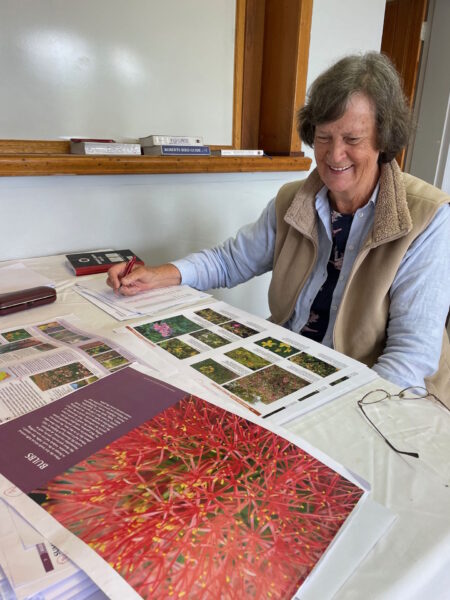
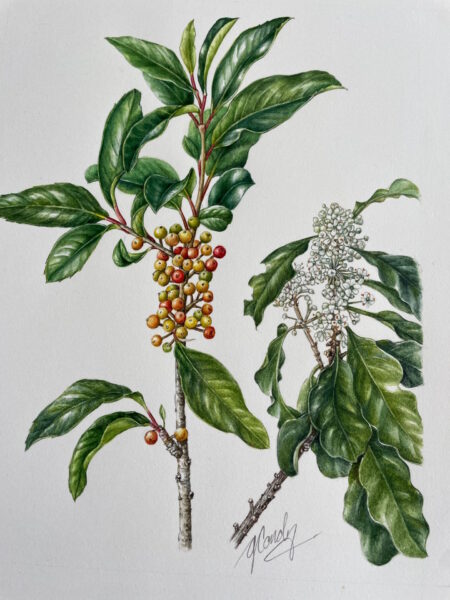
6. Who is best suited for the Botanical Art Course?
I believe anyone who has a passion for the outdoors, especially plants would enjoy the experience. We don’t promise to turn them into budding artists, but from experience, walks in the veld will never be the same again as there is a heightened awareness of their surroundings, the colours and how the light falls onto surfaces. They will want to stop and study the flowers and grasses on the paths, instead of rushing past.
With the Botanical Illustration course, we spend most of the time in the studio, taking walks in the morning and evening to enjoy the Cavern surrounds and hopefully be inspired by a plant we see to be the subject of a portrait. We will guide you through a step-by-step process to hopefully ease your confidence, especially if a beginner. With the more experience artist, we will encourage and challenge them to develop their draughtsmanship and watercolour handling skills. We choose to keep to small classes so that there is plenty of one-on-one time with the teachers. Botanical art is the most rewarding of hobbies.
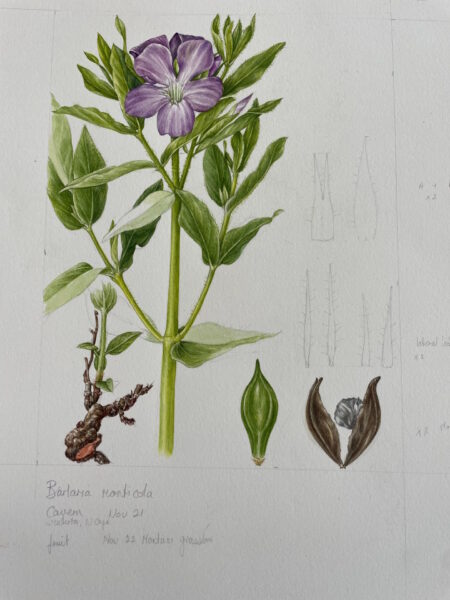
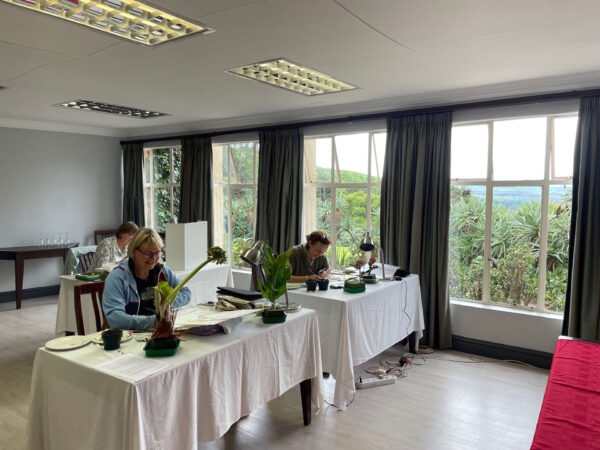
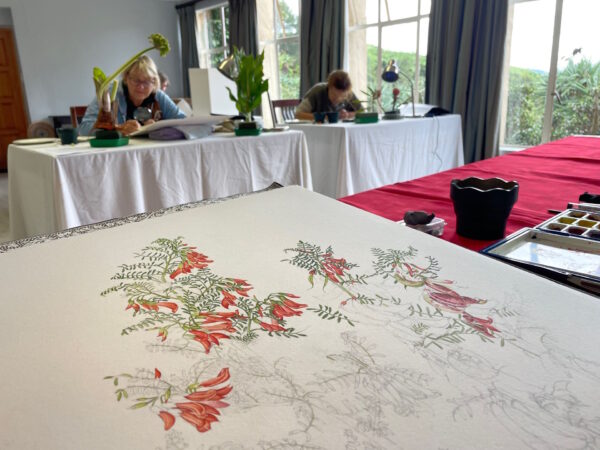
I would just like to add, that I have loved teaching. Love the opportunity to get to know people, help them hone their observation and draughtsmanship skills and get a good feel for colour. I cannot take the information with me, so need to share as much as I can now. One never stops learning, and each teacher can offer something new or remind you of a useful step you missed out on. So given the chance, I still attend courses, locally and overseas. There are some brilliant holiday destinations with some of the world’s best teachers and don’t forget the scores of zoom courses being offered. We are living in exciting times.
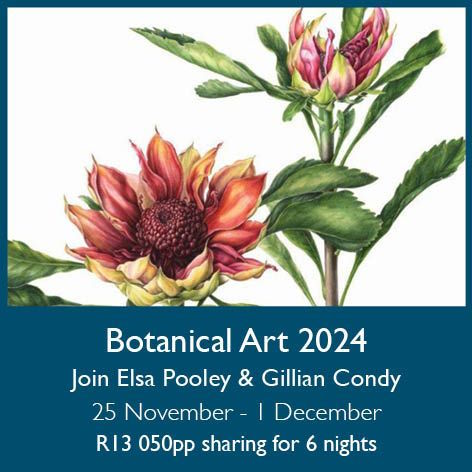

Hi there, I am very interested and would like to know more details. I’d also be on the single rate. Thanks so much.
Hello Lyn
Many thanks. I have sent through details on email regarding the course.
The single rate for the 6-night stay is R17325 which includes accommodation, all meals and the Course fee.
Please let us know if you are able to book.
Warm wishes,
Megan
What is the price for a single, not sharing?
Hello Cynthia
Thank you for your message.
We have sent full details on email but for the moment the single rate for the 6-night stay is R17325.
With best wishes,
Megan